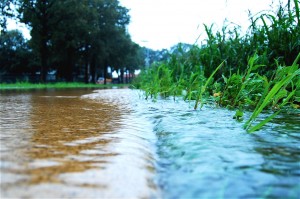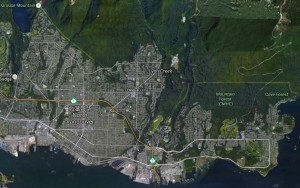What is Stormwater?

Stormwater is created when precipitation from rainfall and snowmelt flows over permeable and impervious surfaces (EPA, 2013). In urban environments, the decrease of vegetation covers and the increase of impervious surface, such as paved roads and concrete buildings, increase the total amount of run off, which becomes unmanaged stormwater. Unmanaged urban stormwater can result in flooding in lowland areas, erosion of stream bank, damage of properties and infrastructures as well as pollution of surface and ground water since it picks up contaminants that accumulate on impervious surface when flowing over land (EPA,2016).
District of North Vancouver

Land use
District of North Vancouver comprises of two parts, the undeveloped part which is dominated by greenland, and the urban area which is highly developed municipalities with large proportions of impervious surfaces. Dwelling land is dominant in those area, which is followed by industrial land and commercial land.
Climate
The climate condition in targeted area is distinguished as damp, cold winter but mild summer with average annual sea level temperature around 10℃. In Vancouver, precipitation can be measured in166 days per year, which forms a character of long duration and low intensities. The precipitation can reach 3000 mm in higher elevation but will decrease to 1200 mm along shoreline. The quantified relation between precipitation and elevation is that every 100 meter’s increase in altitude causes 100 mm more in precipitation. It contributes more winter precipitation in North Shore and higher elevation area (Climate Canada, 2016).
Waterbody
| Major rivers | Capilano River, Seymour River |
| Creeks | MacKay Creek, Mosquito Creek, Lynn Creek. |
The direct drainage of stormwater into those river is the major concern as it can cause problems like flooding or nonpoint source pollution.